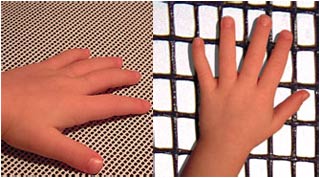Finger length reveals learning power
Looking at the length of the child's index finger and ring finger can predict how well they will achieve in the college exam. Children with ring fingers longer than forefinger will have higher math scores than literature, while those with the opposite ratio will get higher grades in math.
Scientists already know that intrauterine testosterone and estrogen levels make a difference in finger length, reflecting which areas of the brain are more developed than other brain regions, psychologist Mark Brosnan at Dai Bath, USA, said.
Testosterone exposure from the womb will stimulate the development of the brain region related to math and space skills. This hormone also makes the ring finger longer. And more estrogen levels stimulate brain growth
 (Photo: Cuttingedgecreations) Related words and making the index finger longer than the ring finger.
(Photo: Cuttingedgecreations) Related words and making the index finger longer than the ring finger.
To test the relationship with the SAT scores (Scholastic Assessment Test) of the US, Brosnan and colleagues calculated the index finger and ring finger lengths to the nearest 0.01 mm.
Next, the researchers looked at the results of boys and girls' tests and compared them with finger ratios. They found a clear relationship between testosterone exposure from the womb, expressed with the index finger shorter than the ring finger, with a higher math score.
Similarly they found higher scores in girls who were exposed to less testosterone than in the uterus, represented by a ring finger shorter than the index finger.
"It is interesting to see the proportion of fingers that can tell us about your innate learning forces," Brosnan said. In the future the team will explore finger ratios related to behavioral and cognitive problems, such as career paths, or dyslexia.
MT
- The ring finger reveals the richness of men
- Guess the disease through the length of the finger
- Finger length reveals athletic ability
- Finger reveals risk of prostate cancer?
- Science proves that fingers reveal personality and talent
- The sign on the hand reveals what you are suffering from
- Testosterone determines human fate
- Guess the fertility of men through the right hand
- Finger shape speaks up your personality
- The art of hand watching makes the scientific community nod their heads
- How quickly is poison in finger leaves killing people?
- The reason why controlling the ring finger always makes us tired
 'Fine laughs' - Scary and painful torture in ancient times
'Fine laughs' - Scary and painful torture in ancient times The sequence of numbers 142857 of the Egyptian pyramids is known as the strangest number in the world - Why?
The sequence of numbers 142857 of the Egyptian pyramids is known as the strangest number in the world - Why? History of the iron
History of the iron What is alum?
What is alum?